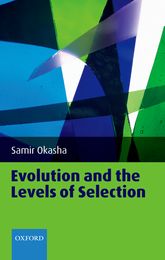On the 20th and 21st of February we had our annual School of Natural Sciences Postgraduate Symposium. Over the course of two days many of our PhD students presented their work to the School. We also had two interesting plenary talks from Dr Sophie Arnaud-Haond (Ifremer) and Dr Lesley Morrell (University of Hull). Unfortunately our third speaker, Dr Fiona Jordan (University of Bristol) had to cancel due to illness.
For those of you who are interested in exactly what we work on here at EcoEvo@TCD, here are the abstracts from the PhD student presentations. Check out the TCD website for more details!
Ruby Prickett*: Geographical, ecological and genetic characterisation of perennial biomass grasses
*Unfortunately Ruby was unable to attend but we still have her abstract
Evidence suggests that increasing CO2 concentration from fossil fuels in the atmosphere is contributing to global climate change. There is great interest in producing energy from biological sources such as willow (Salix spp.), and the grass Miscanthus. This project aims to contribute to the development of grasses of the C4 genus Miscanthus and several C3 species (Dactylis glomerata, Festuca arundinacea and Phalaris arundinacea) for use as biomass crops, particularly on marginal land. This project aims to produce maps and species distribution models for each of the four species, to identify potential areas for production and their impact on biodiversity; to collect new accessions of Dactylis and Phalaris in the Northwest Europe and Miscanthus in Asia; and to assess the genetic diversity within each species.
Rebecca Rolfe: Identification of Mechanosensitive Genes during Skeletal Development: Functional evidence associated with the Wnt Signalling Pathway
Mechanical stimulation is important for the correct formation of the skeleton. Mutant embryos that develop with an altered mechanical environment result in defects in ossification and joint formation in the limb. We tested the hypothesis that mechanical stimuli influence the regulation of genes important in skeletal development by analysing the transcriptome of muscle-less and control skeletal tissue. We found 1,132 independent genes are differentially expressed with significant enrichment of genes associated with development and differentiation and cell signalling. In particular, multiple components of the Wnt signalling pathway are affected. An investigation of the functional effects of over/ectopically expressing Wnt pathway components in the developing chick will be tested using in ovo and ex ovo electroporation. It will be used to assess whether manipulation of the Wnt pathway in the developing joint mimics the phenotype that is seen when mechanical stimulation is removed, to identify whether or not disturbing the pathway alone causes the phenotypic disturbance seen when mechanical stimulation is removed.
Anurati Saha: The Influence of Mechanical Forces for the Definition of Articular Cartilage
Articular cartilage covers the terminal ends of bones at synovial joints. It allows pain-free movement with injury or degeneration leading to diseases such as osteoarthritis. Current treatment is whole joint replacement but stem cell regenerative therapies would offer a more sustainable solution. Previous research in the lab has shown that appropriate mechanical stimulation from movement of the embryo is required for normal joint formation; joints fuse when movement is absent. My project aims to increase our knowledge of mechanical regulation of joint development in a number of respects and to explore application of such findings to achieve stable differentiation of cartilage for alternative regenerative therapies.
In the first year of my PhD, I investigated the potential of embryonic limb bud cells to form cartilage in micromass culture. This allowed me to establish a protocol to achieve chondrogenesis and revealed the stage of maximum chondrogenic potential. This part of my work will be developed to compare the response of embryonic limb bud cells and adult progenitor cells from different sources (bone marrow and joint derived) to mechanical stimuli in 3D scaffolds, potentially valuable in the refinement of protocols for regenerative therapies
Claire Shea: Mechanotransduction in Skeletal Development: From Embryonic Development to Regenerative Therapies*
*Highly commended
Why do babies kick? Why do astronauts in zero-gravity lose bone mass? What are the causes of osteoporosis and osteoarthritis? The human skeleton allows us to move, but also requires movement for its own development and maintenance. Mechanical forces impact developing tissues, making embryonic movement (kicking and stretching) necessary for normal skeletal development. Understanding how a healthy skeleton forms is also important for skeletal disease therapies which seek to generate replacement tissues by recapitulating the normal developmental pathway with cell cultures. Wnt is a cell-signalling system known to be vital to many aspects of embryonic patterning, and has been implicated in mechanotransduction by our lab. My work focuses on identification of Wnt component genes responsible for transducing mechanical signals such as tension, hydrostatic pressure, or shear into a genetic response in developing joints and bones. To characterise gene expression patterns in normal vs. mechanically-altered environments, and to assess the role of Wnt, I use genetic mutants (mouse) and gene electroporation (chick). My goal is to apply this in vivo information to in vitro efforts, where stem cells embedded in 3-D scaffolds will be treated with an optimal genetic and physical environment to form functional, stable adult bone or cartilage tissue.
Sive Finlay: Tremendous tenrecs: curious convergence and distinctive disparity*
*Best talk 1/2
Understanding patterns of variation in morphological diversity, such as convergence and disparity, remains a challenge in evolutionary biology. In particular, questions of convergence and the predictability of evolution are central to the long-standing debate about the relative influences of historical contingency and determinism in evolutionary processes. Theoretical models indicate that some degree of convergence is expected by chance in most phylogenies. Therefore, quantitative analysis and explicit tests of superficial patterns are essential if we are to identify and understand significant cases of evolutionary convergence. However, most quantitative methods of identifying convergence were developed using relatively few groups for which detailed morphological and ecological data were already known. I want to test the wider applicability and usefulness of such quantitative methods by applying them to a new study group.
Malagasy tenrecs appear to be both disparate from each other and convergent with other “insectivore” mammal species. I’m assessing the evidence for significant morphological disparity within tenrecs and convergences among tenrecs and other mammals using a combination of geometric morphometric techniques and phylogenetic comparative methods. Subsequently, I will establish whether there are correlations between morphologically similar species occupying convergent ecological niches.
Kevin Healy: The evolution of potent venom in snakes*
*Highly commended
The ability of a predator to capture its prey is a fundamental element of ecological interactions. Such interactions can broadly be described as following general scaling laws underpinned by factors such as predator-prey body size difference’s, or habitat complexity. Unlike many predators, the ability of snakes to subdue and capture prey is mediated not by physical size but by their highly evolved venoms. Based on general predator prey scaling predictions I explore the hypothesis that venom potency is affected by ecological factors relating to the ability to quickly subdue prey. The factors I predict to increase venom potency include large prey size and low prey metabolic rate, as they reduce the speed of the venom affects, and habitat complexity, as more complex habitats would allow prey more opportunity to escape. Understanding the general drivers of venom evolution can lead to insights into the evolution of snakes and other venomous species and point to perhaps other untapped venom derived bio-resources.
Erin Jo Tiedeken: The impacts of Rhododendron nectar toxins on Ireland’s bees: deadly meal or valuable forage?*
*Best talk 2/2
Bees provide the valuable ecosystem service of pollination while visiting flowers and collecting nectar. We are currently experiencing a “pollinator crisis,” as pollinating species decline in response to anthropogenic pressures. Moreover, bees may exhibit species-specific responses to drivers of decline.
Rhododendron ponticum is an invasive flowering shrub that causes ecological and economic damage in Ireland. R. ponticum produces floral nectar in order to attract pollinators, but paradoxically this nectar contains neurotoxins called grayanotoxins. Our study investigated the impact of grayanotoxins on three bee species; Apis mellifera, Bombus terrestris, and a solitary Andrena species. For each species we tested whether consumption of nectar grayanotoxins had an impact on (1) survival, (2) consumption rate, and (3) behavior. Our results demonstrate that bees have critically different responses to grayanotoxins. Grayanotoxins are acutely toxic to honeybees, however, bumblebees exhibited no lethal or sublethal effects. Solitary bee survival was not affected, however bees exhibited temporary neurological symptoms after eating grayanotoxins. Rhododendron reduces available forage for honeybees and some solitary bees but could provide an important food resource for certain bumblebees. Our results demonstrate that studies of pollinator decline should include multiple species and should not extrapolate to species other than those included in the study.
Image Source: Wikicommons





















